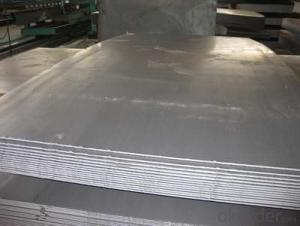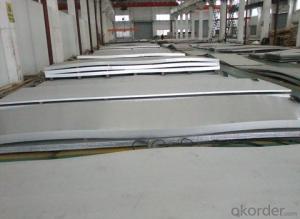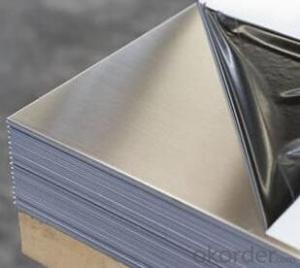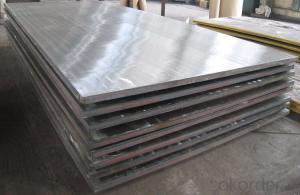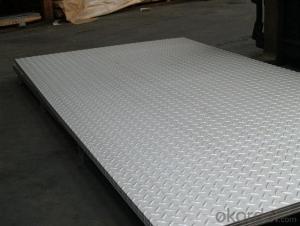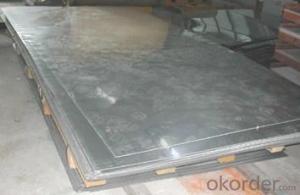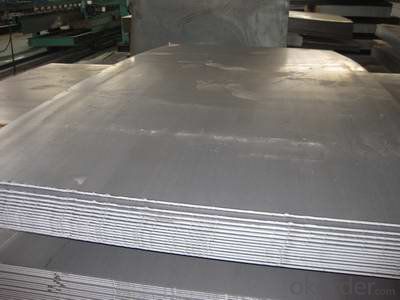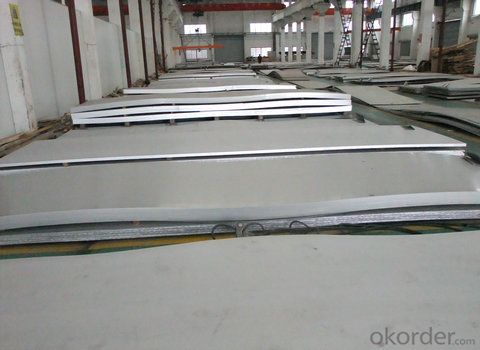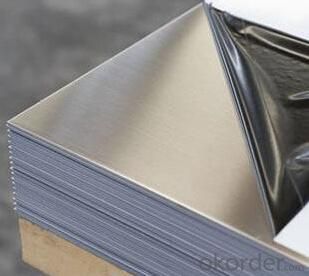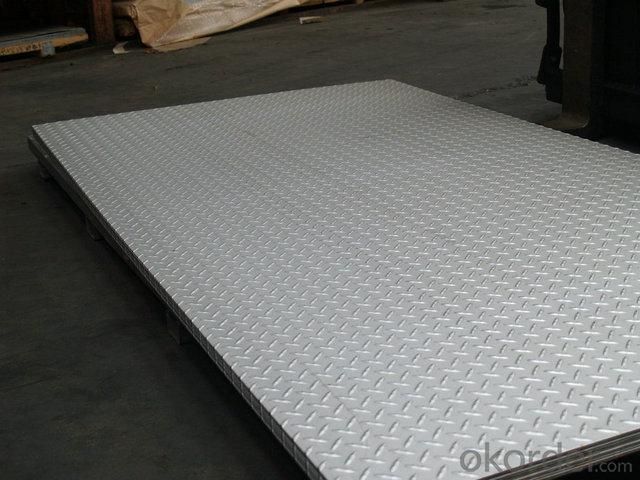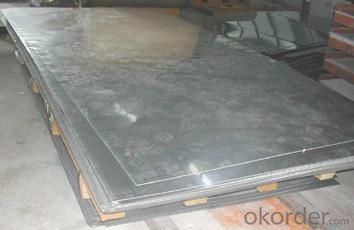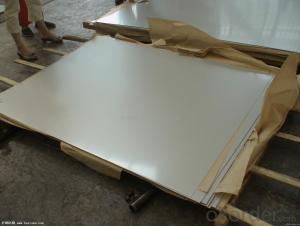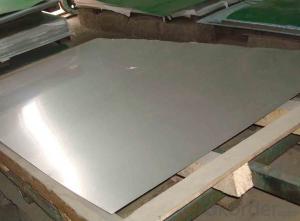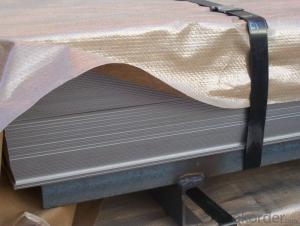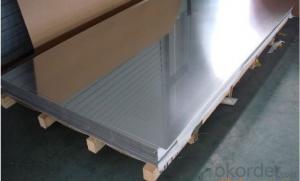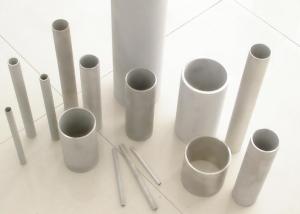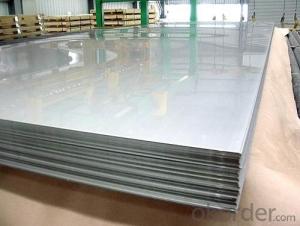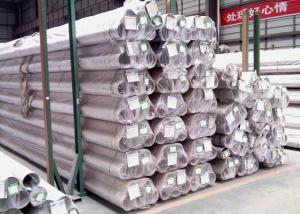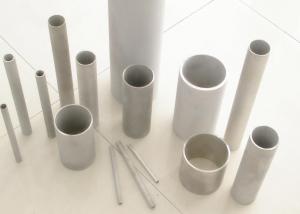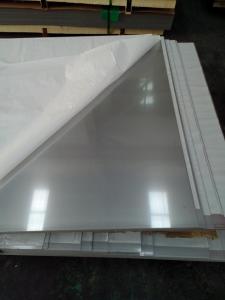Stainless Steel Sheet 430 with Small Size #4 Polish Treatment
- Loading Port:
- Shanghai
- Payment Terms:
- TT OR LC
- Min Order Qty:
- 10000 m.t.
- Supply Capability:
- 5000000 m.t./month
OKorder Service Pledge
OKorder Financial Service
You Might Also Like
Hot sale stainless steel sheet 201/202/304/304l/316/316l/430
Description of Stainless Steel Sheet:
Description | steel sheet,hot rolled steel sheet,cold rolled steel sheet, steel sheet,sheet,steel plate |
Standard | ASME, ASTM, EN ,BS,GB,DIN, JIS etc |
Application | Steel sheet applies to construction field, ships building industry, petroleum & chemical industries, war and electricity industries, food processing and medical industry, boiler heat exchanger, machinery and hardware fields. |
Packaging | Standard export sea-worthy packing |
Delivery time | 10-30 days |
Quality | No.1 |
Productivity | 500 tons/Day |
Note | Our company has cooperative relation between the domestic agents. Stainless steel sheet can be made accordingto the customers requirements. Fasten delivery. Quality assured. |
Contacts | If you have any question,please feel free contact me. |
Stainless steel sheet surface finish characteristics
Surface finish | Characteristics and application |
2B | The surface brightness and flatness of no2B is better than no2D. then through a special surface treatment to improve its mechanical properties,No2B could nearly satisfy comprehensive uses. |
No.1 | Polished with abrasive belt of grit#100-#200, have better brightness with discontinuous coarse stria, used as inner and external ornaments for building, electrical appliances and kitchen utensils etc. |
No.4 | Polished with abrasive belt of grit #150-#180,have better brightness with discontinuous coarse stria, but thinner than No3, are used as bathtub buildings inner and external ornaments electrical appliances kitchen utensils and food processing equipment etc. |
HL | Polished with abrasive belt of grit #150-#320 on the NO.4 finish and has continuous streaks, mainly used as buildings ornaments elevators, door of building, frontal plate etc. |
BA | Cold rolled, bright annealed and skin-passed, the product have excellent brightness and good reflexivity like mirror, kitchen apparatus, ornament etc. |
8K | The product have excellent brightness and prefer reflexivity can to be the mirror. |
Main Features of stainless steel sheet :
•Escalator, Elevator, Doors
•Furniture
•Production tools, Kitchen appliances, freezers, cold rooms
•Auto Parts
•Machinery and Packaging
•Equipment and Medical devices
•Transport system
Product Details:
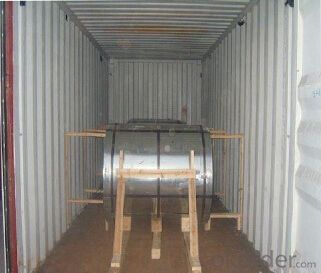
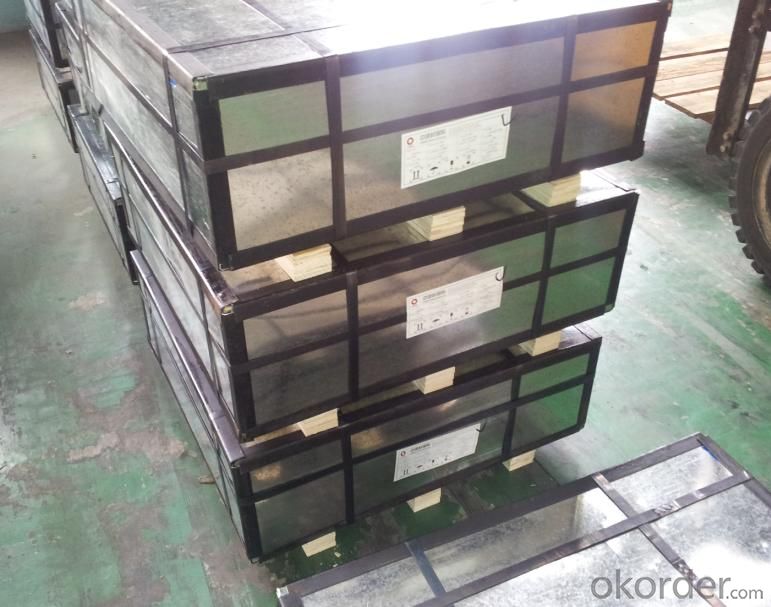
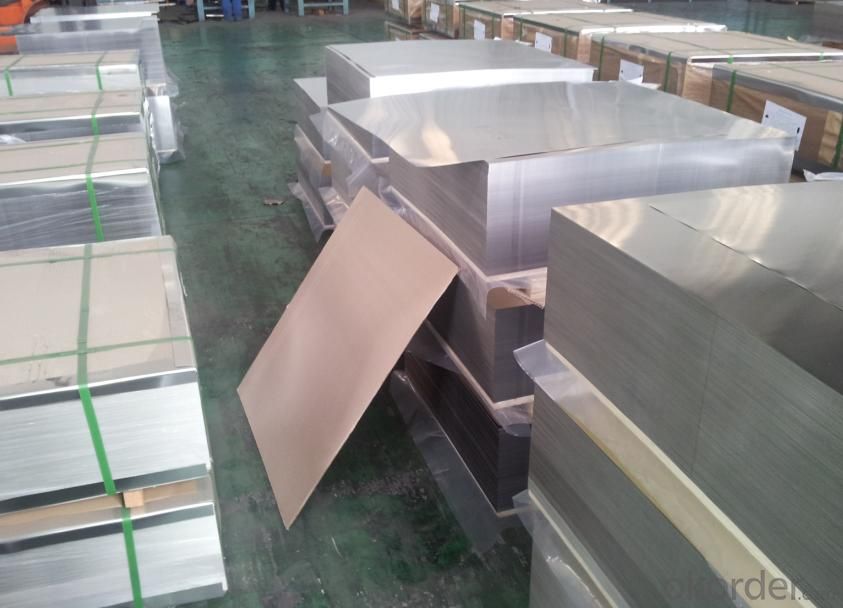
Sandard Seaworth Packing(wooden packing with water proof paper)

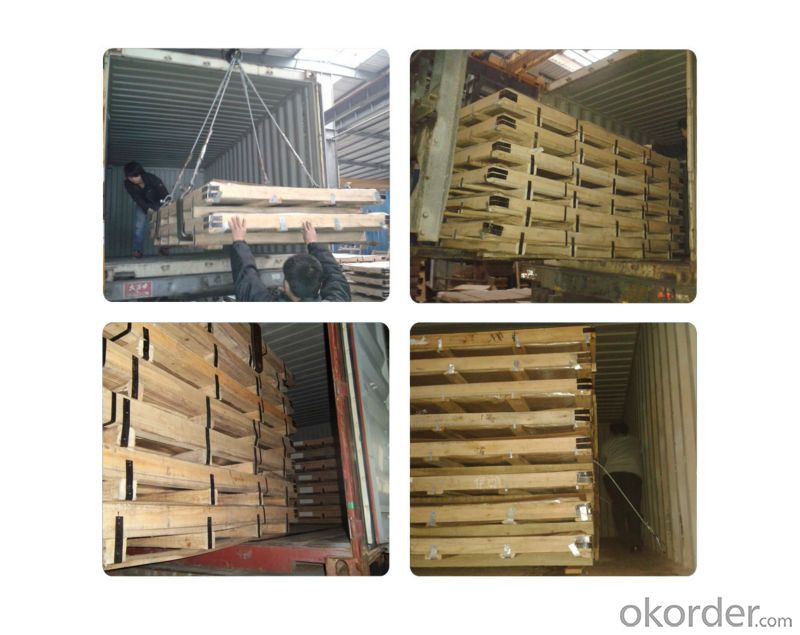
FAQ:
What are we supplying now?
We are specialized in producing stainless steel coil, stainless steel (plate/sheet), and duplex stainless steel for a
prelonged period. We are currently doing grade of steel of 201/202,304/304L, 310S/309S/316L/316Ti/321,410/4
20/430/444/443/409L, and 904L
2. How Many years experience do we have?
We have been exported to more than 20 countries in the past 15 years.
3. How long do we usually reply your request?
We always reply our customer within 24 hours.
If you have any question about stainless steel sheets,donot forget to sending the email to Us! You will get the competitive Price and have a very good experience about the Buying Process! CNBM International Corporation is always your trustful friend!
- Q: Can stainless steel sheets be used for storage containers?
- Yes, stainless steel sheets can be used for storage containers. Stainless steel is a durable and corrosion-resistant material that is commonly used in various industries, including food and beverage, pharmaceuticals, and chemical storage. Its ability to withstand high temperatures, resist rust and stains, and its non-reactive nature make it an ideal material for storage containers. Stainless steel sheets can be fabricated into containers of various sizes and shapes, providing a secure and hygienic storage solution for a wide range of products. Additionally, stainless steel is easy to clean and maintain, ensuring the longevity and cleanliness of the storage containers.
- Q: Are stainless steel sheets resistant to UV rays?
- Yes, stainless steel sheets are resistant to UV rays. Stainless steel is known for its durability and corrosion resistance, and this extends to its ability to withstand exposure to UV rays. The chromium content in stainless steel forms a protective oxide layer on the surface, which helps prevent the metal from oxidizing or corroding when exposed to sunlight. This oxide layer acts as a barrier that shields the stainless steel from UV rays, making it highly resistant to the damaging effects of prolonged sun exposure. Therefore, stainless steel sheets are an excellent choice for outdoor applications where UV resistance is a requirement, such as roofing, cladding, and architectural elements.
- Q: Can stainless steel sheets be used in the aerospace industry?
- Certainly, the aerospace industry can indeed employ stainless steel sheets. With its exceptional mechanical properties, corrosion resistance, and high strength-to-weight ratio, stainless steel is an incredibly versatile material. Hence, it finds great applicability in numerous aerospace uses. For instance, it is frequently utilized in fabricating aircraft elements like engine parts, structural frames, fuel tanks, and exhaust systems. Moreover, stainless steel sheets are also employed in manufacturing aerospace fittings, fasteners, and even interior cabin components. Thanks to its outstanding durability and ability to withstand extreme environments and temperature variations, stainless steel remains a dependable choice for the aerospace industry.
- Q: Can stainless steel sheets be used for roofing or cladding?
- Certainly! Roofing or cladding can definitely utilize stainless steel sheets. Stainless steel, being a durable and resistant material, is perfectly suitable for exterior purposes. It provides exceptional strength and can endure severe weather, thus making it an ideal option for roofing or cladding. On top of that, stainless steel presents a sleek and contemporary look that can enhance a building's aesthetic charm. Moreover, its long-lasting nature and minimal maintenance needs make it a cost-effective choice in the long term. All in all, stainless steel sheets are a dependable and adaptable option for roofing or cladding ventures.
- Q: How do you join stainless steel sheets together?
- There are various methods to join stainless steel sheets together, depending on the specific application and desired outcome. Here are a few common techniques: 1. Welding: Stainless steel can be welded using various methods such as TIG (Tungsten Inert Gas), MIG (Metal Inert Gas), or spot welding. Welding creates a strong and durable bond between the sheets, ensuring a secure connection. 2. Mechanical Fasteners: Using mechanical fasteners like screws, bolts, or rivets can be an effective way to join stainless steel sheets. This method is often used when disassembly or reassembly is required, as it allows for easy removal and reinstallation. 3. Adhesive Bonding: Specialized adhesives designed for stainless steel can be used to join sheets together. These adhesives create a strong bond while maintaining the aesthetics of the stainless steel surface. However, adhesive bonding may not be suitable for high-stress or high-temperature applications. 4. Clinching: Clinching involves using a special tool to press the stainless steel sheets together, creating a mechanical interlock. This method is commonly used for joining thin sheets and offers a cost-effective and fast solution. It is important to choose the appropriate method based on the specific requirements of the project, including factors such as load-bearing capacity, temperature, corrosion resistance, and aesthetics. Consulting with a professional or conducting thorough research can help ensure the chosen joining technique is suitable for the intended application.
- Q: What is the difference between stainless steel sheets and stainless steel plates?
- The main difference between stainless steel sheets and stainless steel plates lies in their thickness. Stainless steel sheets are typically thinner, with a thickness ranging from 0.4mm to 6mm, while stainless steel plates are thicker, with a thickness starting from 3mm and going up to several inches. Additionally, stainless steel plates are often used for structural purposes or heavy-duty applications, while stainless steel sheets are commonly used for decorative purposes, cladding, or smaller projects.
- Q: Are stainless steel sheets suitable for nuclear power plants?
- Stainless steel sheets are well-suited for nuclear power plants due to their unique properties that make them ideal for such hazardous environments. Firstly, their exceptional corrosion resistance is crucial in plants with high levels of corrosive substances. Corrosion can compromise materials' structural integrity, leading to safety risks and potential failures. Therefore, stainless steel's resistance to corrosion ensures the longevity and reliability of equipment and structures in nuclear power plants. Secondly, stainless steel possesses high strength and toughness, enabling it to withstand extreme conditions like high temperatures and pressures found in these facilities. This strength and toughness allow stainless steel to endure the harsh environment and potential mechanical stresses that may arise during normal operations or accidents. Moreover, stainless steel exhibits excellent heat resistance, a critical characteristic in nuclear power plants where nuclear fission generates high temperatures. Stainless steel's ability to maintain its strength and structural integrity even at elevated temperatures makes it suitable for containing and handling radioactive materials and hot fluids. Additionally, stainless steel is easy to clean and maintain, which is vital in nuclear power plants where cleanliness and sterility are paramount. Regular cleaning and maintenance are necessary to prevent the accumulation of radioactive contaminants and ensure the safe and efficient operation of equipment and systems. In conclusion, stainless steel sheets are highly suitable for use in nuclear power plants due to their corrosion resistance, strength, toughness, heat resistance, and ease of maintenance. Their utilization ensures the safety, reliability, and durability of equipment and structures, thereby enhancing the overall efficiency and effectiveness of nuclear power plants.
- Q: Can stainless steel sheets be used for soundproofing?
- Stainless steel sheets alone are not typically used for soundproofing purposes. While stainless steel is known for its durability and corrosion resistance, it does not possess significant soundproofing properties. However, stainless steel sheets can be incorporated into soundproofing systems as part of a composite structure or in conjunction with other soundproofing materials to enhance their overall effectiveness.
- Q: What is the stainless steel grid board? What areas of stainless steel mesh panels are used in?
- Lattice plate of stainless steel steel has strong corrosion resistance, anti-corrosion effect was significantly higher than that of hot dip galvanized steel plate, but the cost is higher, stainless steel grid board is widely used in municipal, environmental protection, steel structure, boiler, desulfurization and denitrification projects, procurement of stainless steel grid plate, Changzhou Gemeirui steel grid plate.
- Q: Are stainless steel plates 3.4mm or 3.5mm thick?
- There are stainless steel sheets in these two specifications.According to standard GB/T 708-2006 cold rolled steel sheet size tolerances, the stainless steel sheet thickness is 0.3~4 mm,
Send your message to us
Stainless Steel Sheet 430 with Small Size #4 Polish Treatment
- Loading Port:
- Shanghai
- Payment Terms:
- TT OR LC
- Min Order Qty:
- 10000 m.t.
- Supply Capability:
- 5000000 m.t./month
OKorder Service Pledge
OKorder Financial Service
Similar products
Hot products
Hot Searches
Related keywords
